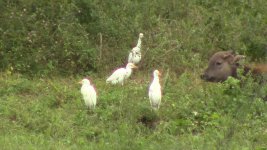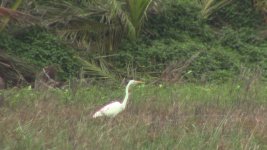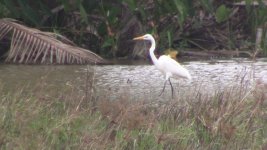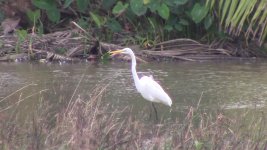Hainan on the fly
Well-known member
The second picture was taken in late October. The others last week.
The last three pictures are of the same individual.
I'm thinking the second picture is Cattle Egret. The short and stocky bill along with a round head seem to point there.
The first must be Little Egret, I think. The picture isn't great and had me wondering what could have black feet and such a slender black bill. Upon looking closer, I'm thinking the yellow feet are covered in mud with a small portion of the lower leg showing the yellow color. The last pictures (all of the same individual) I'm having a difficult time choosing between Intermediate or Great. With a large bill and an angled kink in the neck, I guess I'm leaning towards Great but I'm just not sure.
This is my first time attempting to ID these birds and I'm just kind of thinking aloud with what I'm noticing. Any help would be much appreciated.
Thanks,
Brian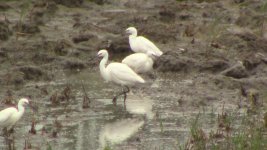
The last three pictures are of the same individual.
I'm thinking the second picture is Cattle Egret. The short and stocky bill along with a round head seem to point there.
The first must be Little Egret, I think. The picture isn't great and had me wondering what could have black feet and such a slender black bill. Upon looking closer, I'm thinking the yellow feet are covered in mud with a small portion of the lower leg showing the yellow color. The last pictures (all of the same individual) I'm having a difficult time choosing between Intermediate or Great. With a large bill and an angled kink in the neck, I guess I'm leaning towards Great but I'm just not sure.
This is my first time attempting to ID these birds and I'm just kind of thinking aloud with what I'm noticing. Any help would be much appreciated.
Thanks,
Brian





